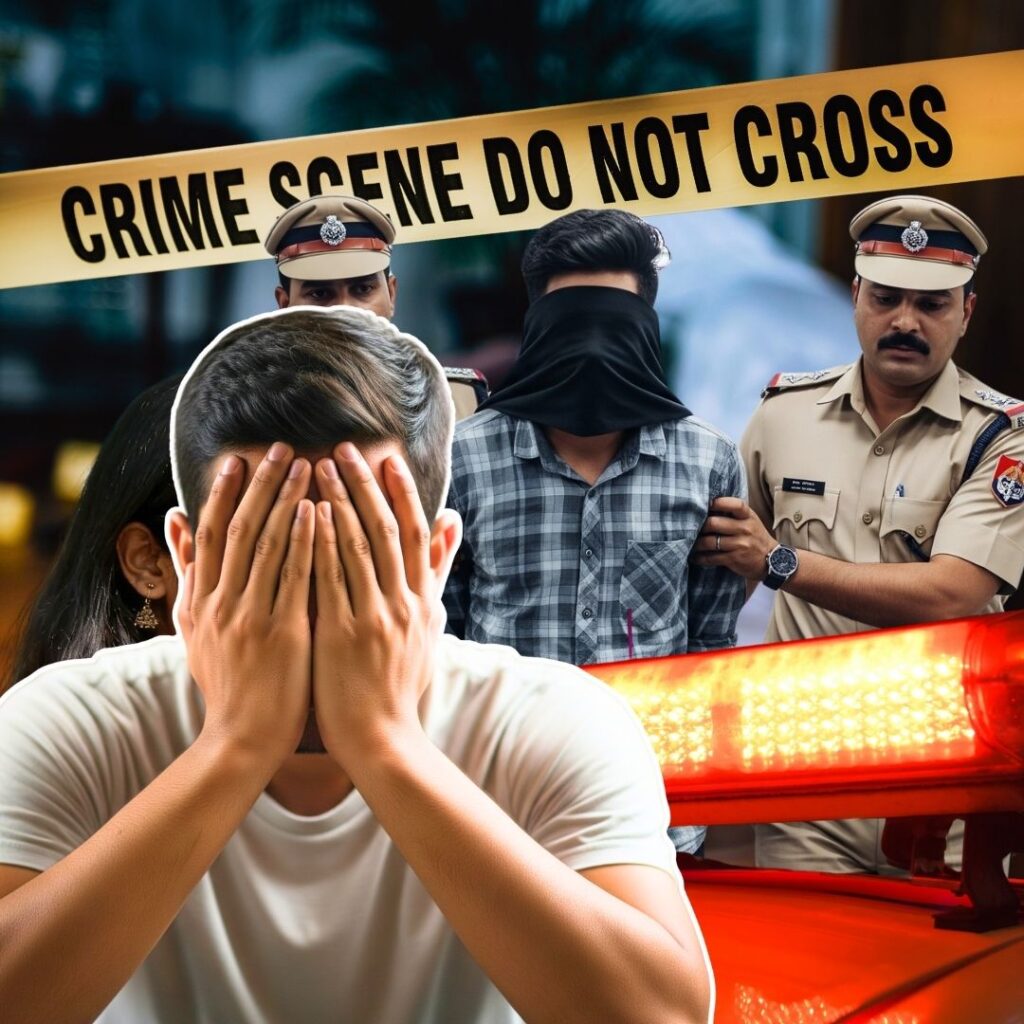The passage of the Citizenship (Amendment) Bill (CAB) in Parliament will mark the definitive victory of Mohammed Ali Jinnah’s thinking over that of Mahatma Gandhi’s, senior Congress leader Shashi Tharoor remarked on the CAB 2019 on December 8, Sunday.
He stressed that the exercise of granting citizenship on the basis of religion will reduce India to a “Hindutva version of Pakistan”. Tharoor’s prediction for India doesn’t seem to be too far from reality.
India’s secular future hangs in limbo, amidst the clamour around the Citizenship Amendment Bill 2019. The bill that will clearly mark the ‘before’ and ‘after’ of India’s approach to secularism and religious minorities, pushing the country to the cusp of major reform.
Breaking Down Amendments To The Bill
- The bill amends the Citizenship Act, 1955 to make people from Hindu, Sikh, Jain Buddhist, Christian and Parsi faiths who entered India from Afghanistan, Bangladesh and Pakistan eligible for citizenship
- In case a person belongs to the aforementioned faiths, from these three countries, does not have proof of birth of parents, they can apply for Indian citizenship after six years of residence in India
- The amended bill applies to people who were “forced or compelled to seek shelter in India due to persecution on the ground of religion..”
- The bill also aims to shield such people from proceedings against illegal migration
So, What Is The Difference Between NRC And CAB?
Though correlated to each other, the Citizenship Act defines parameters for residents of India, while the National Register of Citizens aims to weed out illegal immigrants from citizenship rolls.
NRC in Assam mandates that a person has to prove that either they or their ancestors were present in Assam on or before March 24, 1971. The next day, the war of liberation in Bangladesh began, marked by tens of thousands of refugees entering into India.
The government has said it will extend the NRC process to the rest of India. The NRC process in Assam was not based on religion. The CAB, on the other hand, is targeted towards one faith.
The stark difference between NRC and CAB is, NRC asks one to prove that they inherently belong to India, while, CAB requires one to prove they belong to a persecuted non-Muslim minority group from the neighbouring Islamic countries.
Why Upsetting For North Eastern States
The North East Students Union (NESO), All Assam Students Union (AASU), and civil society groups of Assam believe that their indigenous rights would be jeopardized after the implementation of the recent amendments.
Lurin Jyoti Gogoi, general secretary of AASU, told The Logical Indian that the bill is communally motivated which is against the secular script India prescribes to.
Around three million migrants in Assam were excluded in the first phase of the NRC that was carried out in September 2019. They are looking up to Indian constitution with eyes brimming with hope, that they will not be thrown out of the country. The very country that once opened its arms and provided them with shelter and prospect of a better life when they fled to India especially during the partition of Bangladesh (earlier East Pakistan).
“They have a political agenda behind the bill. The move has been carried out to divide the united people of Assam. The movement of 1979 urged for the deportation of all refugees from the state,’ Gogoi said, “With such problematic infusion of amendments in the Bill, the movement’s cause will be diluted.”
Gogoi believes that the bill is a violation of the Assam Accord and the people of North East feel betrayed by the very constitution that guaranteed to protect them.
India will now selectively pick migrants according to the rituals they practice and gods they worship. Something that goes against the very spirit of the Indian Constitution which is unprejudiced to caste, creed, sex, and religion.
To trace the story of the Citizenship Act and bill, one must go back in time when the act was put in place.
Citizenship Act 1955
When India entered into the sixth year of its Republic, the Parliament enacted the Citizenship bill to determine the rightful citizens of India. It comprised of sections that addressed who are the real citizens of India, who are foreign migrants, and who can be deemed fit to apply for Indian citizenship.
The act required amendments after the explosion of migrants, especially in the North-Eastern region, when West Pakistan attempted annexation in East Pakistan (now Bangladesh).
Assam Agitation and Accord 1985
Assam had become the part of Indian union post-colonial era. The government of India, which has the unilateral power to alter the borders of a state, divided Assam into several states, beginning in 1970.
Amid tensions between East Pakistan and West Pakistan, innumerable Bangladeshis migrated to India to evade conflict. Protests erupted in Assam which was teetered between India and Bangladesh and witnessed a huge influx of foreign migrants in its territory.
This led to incessant protest and agitation in the region between 1979-1985.
In 1985, the government of India signed a treaty with the student unions of Assam that claimed a major stake in Assam’s evolving politics. The treaty is known as Assam Accord 1985. This is how the six years of intense agitation was pacified.
According to the accord, the GOI agreed to identify and deport illegal foreign (Bangladeshi) immigrants from North-Eastern states irrespective of their caste and religion.
Citizenship Amendment Act 2005
The amendments were instituted in 2003 and materialized in the year 2005. They took into consideration a specific time period within which citizens can claim to be permanent citizenship of India. The minimum period of stay in India was set up to 11 years with no consideration of the religion.
This includes two major reforms –
(1) one of whose parents is a citizen of India and the other is not an illegal migrant at the time of his birth, shall be a citizen of India by birth.
(2) It took into consideration the Assam Accord. According to Assam Accord, one who entered India before March 24, 1971, will be treated as Indian citizens (before the liberation war in Bangladesh struck).
Citizenship Amendment Bill 2016
Sifting through the BJP’s 2014 election manifesto, one finds a promise made to the Indians by Narendra Modi, that Hindu refugees will be given protection and shelter by India. Later a welcome hand was extended to all the religious communities except Muslims.
After ascending to power, the BJP introduced the Citizenship Amendment Bill in Lok Sabha in July 2016. It was then referred to the Joint Parliamentary Committee in August 2016. The Bill was passed in the Lok Sabha in January 2019, but it lapsed after the Lok Sabha term ended in June 2019.
First Phase Of NRC
The first phase of NRC was conducted in Assam, excluding around 19 lakh people from citizenship roll. This included Hindus.
Anathema to the BJP, the party hustled to protect the ideology they claim to cherish, if not the Hindus themselves. The BJP cabinet again amended the act, giving a blow to the secular credentials of India.
Amendment Introduced In 2019
The recent amendments extend to safeguard people from Hindu, Sikh, Jain Buddhist, Christian and Parsi faiths who entered India from Afghanistan, Bangladesh and Pakistan, eligible for citizenship.
According to Upmanyu Hazarika, a Supreme Court lawyer, the indigenous nature of Assam will get a major blow post the bill. He said that the selective exclusion will encourage the migrants especially Hindus to settle in non-tribal areas and then venture into whichever part they want, after acquiring the citizenship.
“Out of 700 tribal communities scattered across India, 247 alone belong to North-Eastern states. The tribal communities need to be protected and preserved. But, the Centre did not take us into regard. Our fate has been sealed by the government without taking our stand into consideration. Even colonial powers respected our identities,” Hazarika added, trying to hold his composure as his voice quivered.
While the nationwide protest against the citizenship bill did not act as a deterrent to the Modi-led BJP government, consequently the bill is now tabled in the parliament for discussion.
Takeaways From Citizenship Bill
1. The amendments made to the Citizenship Act 1955 is purely religious in nature, that goes against the secular fabric of India. The Citizenship Amendment Bill provides that Hindus, Sikhs, Buddhists, Jains, Parsis and Christians from Afghanistan, Bangladesh and Pakistan shall “not be treated as illegal migrants” even if they had waded across Indian borders illegally.
2. The bill was put on tables to shelter large numbers of refugees who migrated to India to avoid religious persecution. However, the bill conveniently ignores the persecuted Muslims around the border. It doesn’t talk about Ahmadis who are persecuted in Pakistan, Rohingyas in Myanmar, Muslim communities in Nepal and Srilanka. It deems only Muslim migrants as infiltrators and non-Muslim migrants are refugees in the eyes of the centre.
3. The bill exempted tribal areas of North East. By exempting these areas from the bill, the BJP claims to have addressed the fear of the tribal community. Some argue, however, that nothing would stop illegal migrants living in these areas to simply move over to another part of the North East, gain citizenship and move back, in much the same way they moved there in the first place.
4. Earlier in the process of NRC, one had to prove they intrinsically belong to India. Now, they will prove that they don’t, rather, that they are persecuted minority in their country.
5. The north-eastern states might witness an overwhelming influx of Hindus. Even when the tribal areas have been exempted, they can easily apply for citizenship from Non-tribal areas and later scatter in the region. This will prove to be a growing vote-bank for the BJP in the region that has not fallen into its clutches yet.
Also Read: Sky Rocketing Onion Prices Create Agony, Citizens Come Back With Sarcasm











